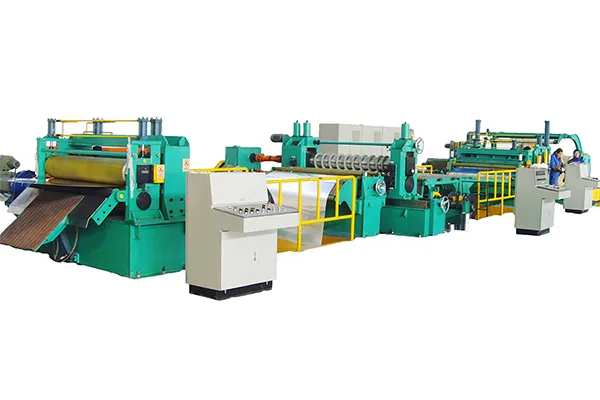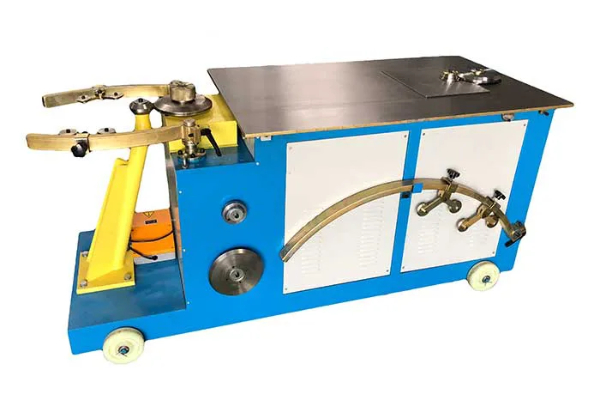
The Environmental Impact of Metal Plate Bending Machines and Sustainable Practices
- By:Metmac
- 2024-08-21
- 153
Introduction
Metal plate bending machines play a crucial role in the fabrication of various products and components used in industries such as construction, automotive, and manufacturing. However, their operation and use of energy and resources can significantly impact the environment. Understanding the environmental impact of these machines and implementing sustainable practices are essential for mitigating damage and promoting a more sustainable future.
Energy Consumption
Metal plate bending machines consume substantial amounts of energy during operation, primarily through the electric motors that power the bending process. The energy consumption varies depending on the size, capacity, and usage of the machine. Continuous operation and extended usage times can lead to higher energy consumption and greenhouse gas emissions.
To mitigate energy consumption, manufacturers can incorporate energy-saving technologies into the design of the machines, such as variable speed drives that adjust motor speed based on demand. Additionally, optimizing the bending process by minimizing waste and reducing cycle times can significantly reduce energy usage.
Waste Generation
During the bending process, metal plates often require cutting or trimming to achieve the desired shape and dimensions. This process generates metal waste, which can be a significant environmental concern. The waste can accumulate in landfills and contribute to soil and water contamination if not properly managed.
Sustainable practices involve implementing waste reduction strategies, such as using scrap metal for other purposes or recycling it. Manufacturers can also invest in technologies that optimize material usage and minimize waste generation, promoting a more circular economy approach.
Air Pollution
The operation of metal plate bending machines can also lead to air pollution. The bending process can release airborne particles, such as metal dust and fumes, which can contribute to respiratory issues and environmental damage. Additionally, the use of lubricants and coolants can result in the release of volatile organic compounds (VOCs) into the atmosphere.
To reduce air pollution, manufacturers can adopt air filtration systems to capture airborne particles and VOCs. Regular maintenance and lubrication of the machines can also minimize the release of pollutants. Furthermore, using environmentally friendly lubricants and coolants can help reduce the impact on air quality.
Noise Pollution
Metal plate bending machines generate noise during the bending process, which can impact the surrounding environment and workforce. Excessive noise can lead to hearing loss, sleep disturbance, and other health issues.
To mitigate noise pollution, manufacturers can incorporate soundproofing materials and enclosures into the machine design. Implementing noise-reducing technologies, such as vibration damping and acoustic insulation, can significantly reduce the noise levels emitted by the machines.
Sustainable Practices
Implementing sustainable practices in the use of metal plate bending machines is crucial for reducing their environmental impact. These practices include:
– Energy-efficient operation: Optimizing machine settings, using energy-saving technologies, and minimizing waste generation reduces energy consumption and greenhouse gas emissions.
– Waste reduction: Recycling scrap metal, implementing waste reduction strategies, and optimizing material usage promotes a circular economy approach and minimizes landfill waste.
– Air pollution control: Installing air filtration systems, using environmentally friendly lubricants, and regularly maintaining machines reduces the release of air pollutants.
– Noise mitigation: Incorporating soundproofing materials, implementing noise-reducing technologies, and reducing machine vibration minimizes noise pollution and protects the workforce and surrounding environment.
Conclusion
Metal plate bending machines are essential tools in various industries, but their operation and use of resources can impact the environment. Understanding the environmental impact and implementing sustainable practices are crucial for minimizing energy consumption, waste generation, air pollution, and noise pollution. By adopting these sustainable approaches, manufacturers can reduce the environmental footprint of these machines and contribute to a more sustainable future.
-
Sheet Metal Rolling Machine for Sale: Finding Precision and Durability with METMAC
2025/12/09 -
Press Brake Bending Machine: Engineering Precision with METMAC
2025/12/09 -
CNC Sheet Bending Machine: Precision Redefined with METMAC
2025/12/09 -
Sheet Metal Roll Forming Machines: The Precision of METMAC Engineering
2025/12/09
-
Advanced Sheet Metal Rolling, Laser Cutting, and Folding Machines for Precision Fabrication
2025/10/31 -
High-Performance Sheet Metal Bending and Cutting Machines for Modern Fabrication
2025/10/31 -
High-Quality Sheet Metal Equipment for Sale: Efficient Solutions for Modern Manufacturing
2025/10/31 -
High-Performance Sheet Metal Equipment for Sale: Forming and Shearing Solutions for Modern Fabrication
2025/10/22
-
A Guide to the Latest Innovations in Sheet Metal Folding Machines
2024/11/29 -
Key Features to Consider When Investing in a Sheet Metal Folding Machine
2024/11/28 -
Enhancing Precision with Advanced Sheet Metal Folding Machines
2024/11/27 -
How to Choose the Right Sheet Metal Folding Machine for Your Workshop
2024/11/26







